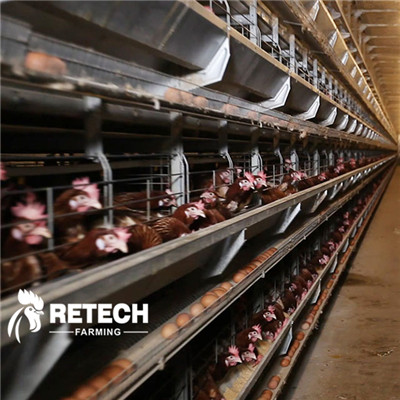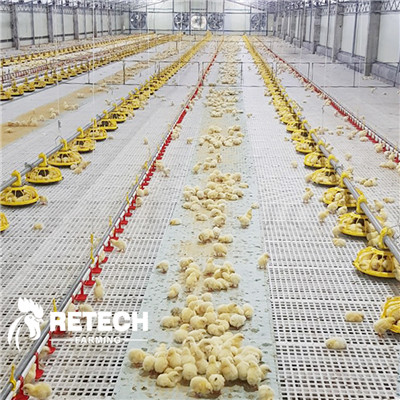Close search
 Published :
/
Published :
/ Posted by : Retech
Posted by : RetechIf ventilation is not carried out in time, not only is there insufficient oxygen, but also a large amount of harmful gases will strongly stimulate the eyes and respiratory tract of chicks, and prolonged stimulation will affect the health of chicks.
In winter, the chicken house, especially the brooding house, burns coal for heating. When the coal is not completely burned in an environment with insufficient oxygen, a large amount of carbon monoxide (gas) is produced. Or because the coal stove chimney is not smooth, smoke pouring, smoke leakage and other reasons, causing carbon monoxide to accumulate in the chicken house, if the chicken house is poorly ventilated, and the carbon monoxide concentration in the air reaches 0.04% to 0.05%, it can cause poisoning and lead to death or slow growth.

Among the above harmful gases, the effect of ammonia on chickens should be highly valued. 0.008% of ammonia gas can be detected in the chicken house, mainly due to the decomposition of nitrogen compounds contained in feces and litter contaminated with feces by microorganisms.
The number of microorganisms in the house is affected by factors such as the accumulation of feces, the degree of litter contamination, the proliferation of microorganisms, and the temperature and humidity in the house.

The concentration of ammonia in the house depends on the retention of the produced ammonia in the house, which in turn is related to the volume of the house, the temperature and humidity in the house, and the amount of ventilation.
Such as high temperature and high humidity weather, in the stepped cage chicken house, when the ammonia concentration reaches 0. When the concentration of ammonia gas is 0.006% to 0.008%, the morbidity rate can reach 30% to 70%, and the mortality rate is 5%. ~30%, when the ammonia concentration is 0.003% ~ 0.0045%, the chickens show loss of appetite, individual chickens cough, runny nose, difficulty breathing, laying hens will reduce egg production and gradually lose weight.
If chickens were placed in an environment with an ammonia concentration of 0.002% for more than 3 days, the susceptibility to Newcastle disease virus and mycoplasma would increase.
Therefore, the ammonia concentration in the chicken house should be kept below 0.002% at ordinary times, especially when determining the ventilation rate, the average value in the house should not be taken as the criterion. Moreover, it is required that the ammonia gas in the air layer where the chickens breathe cannot exceed 0.002% at most.